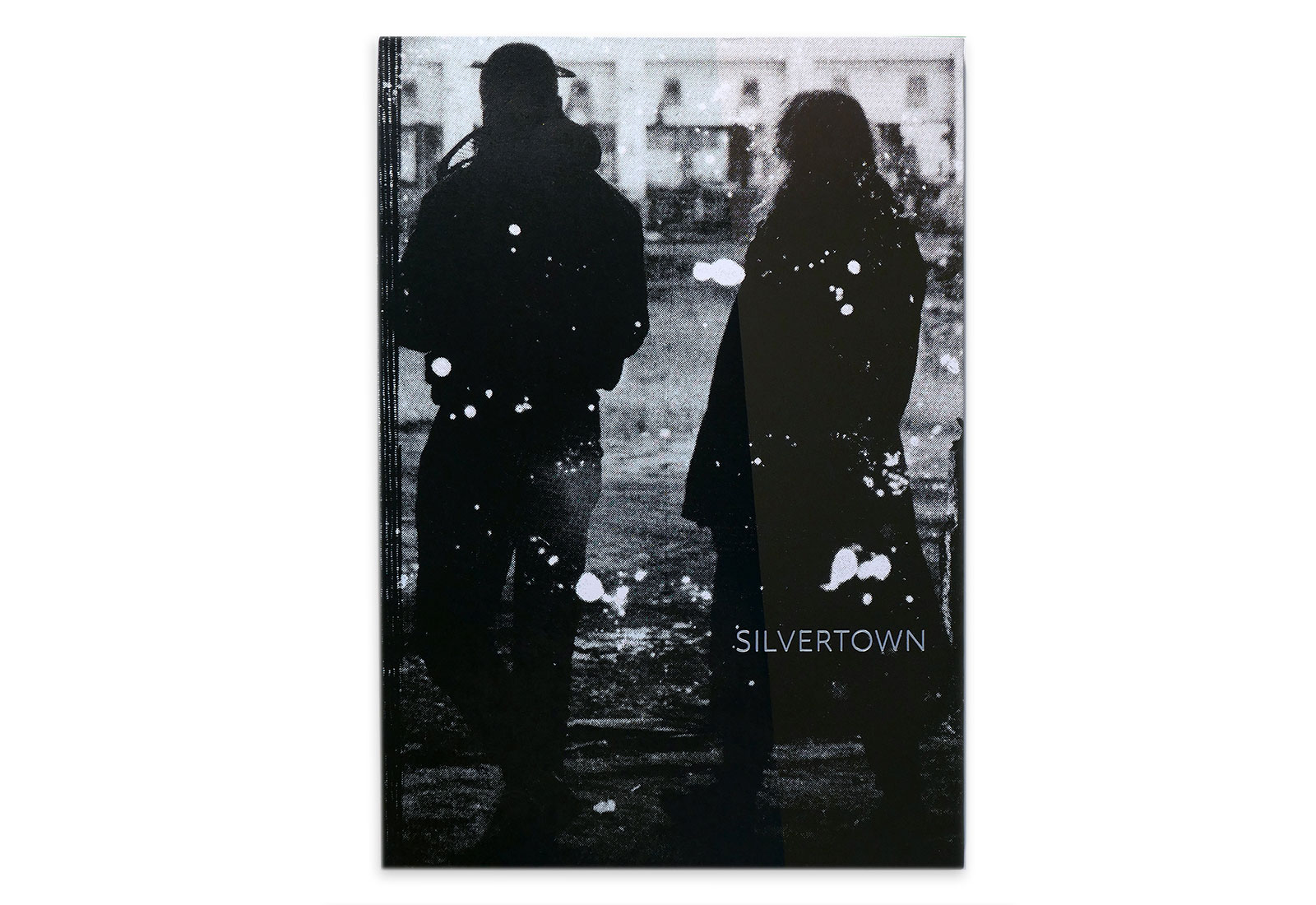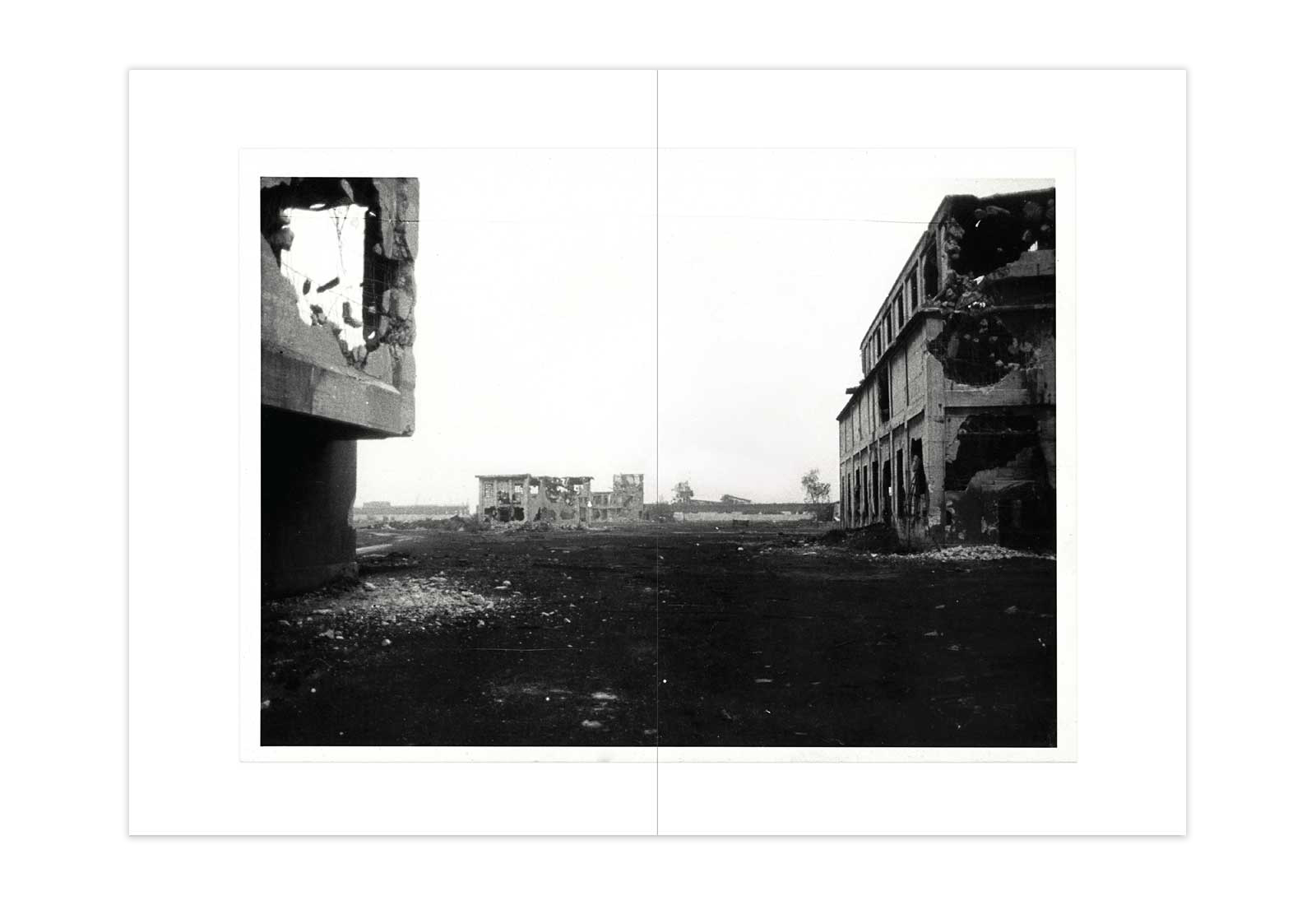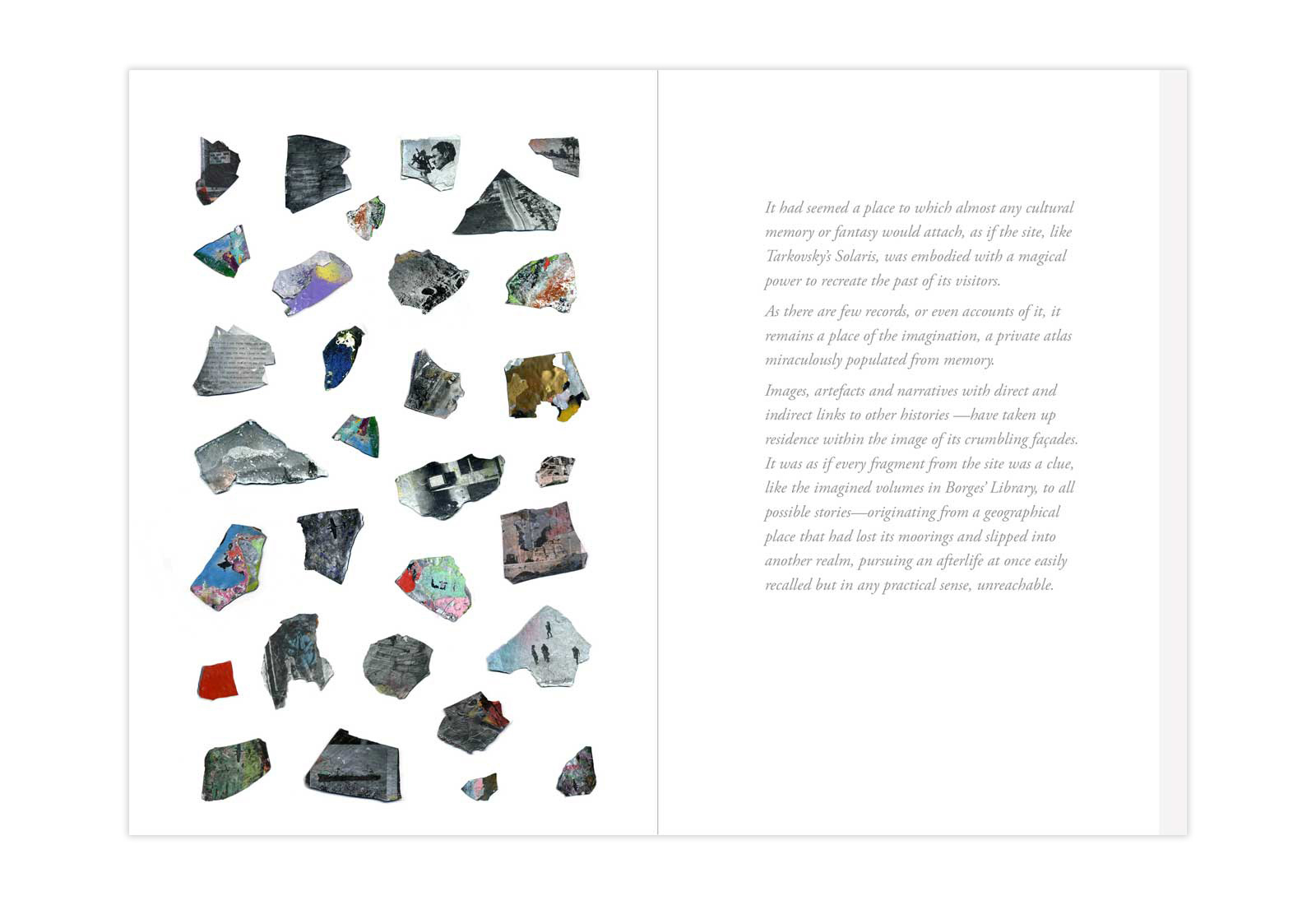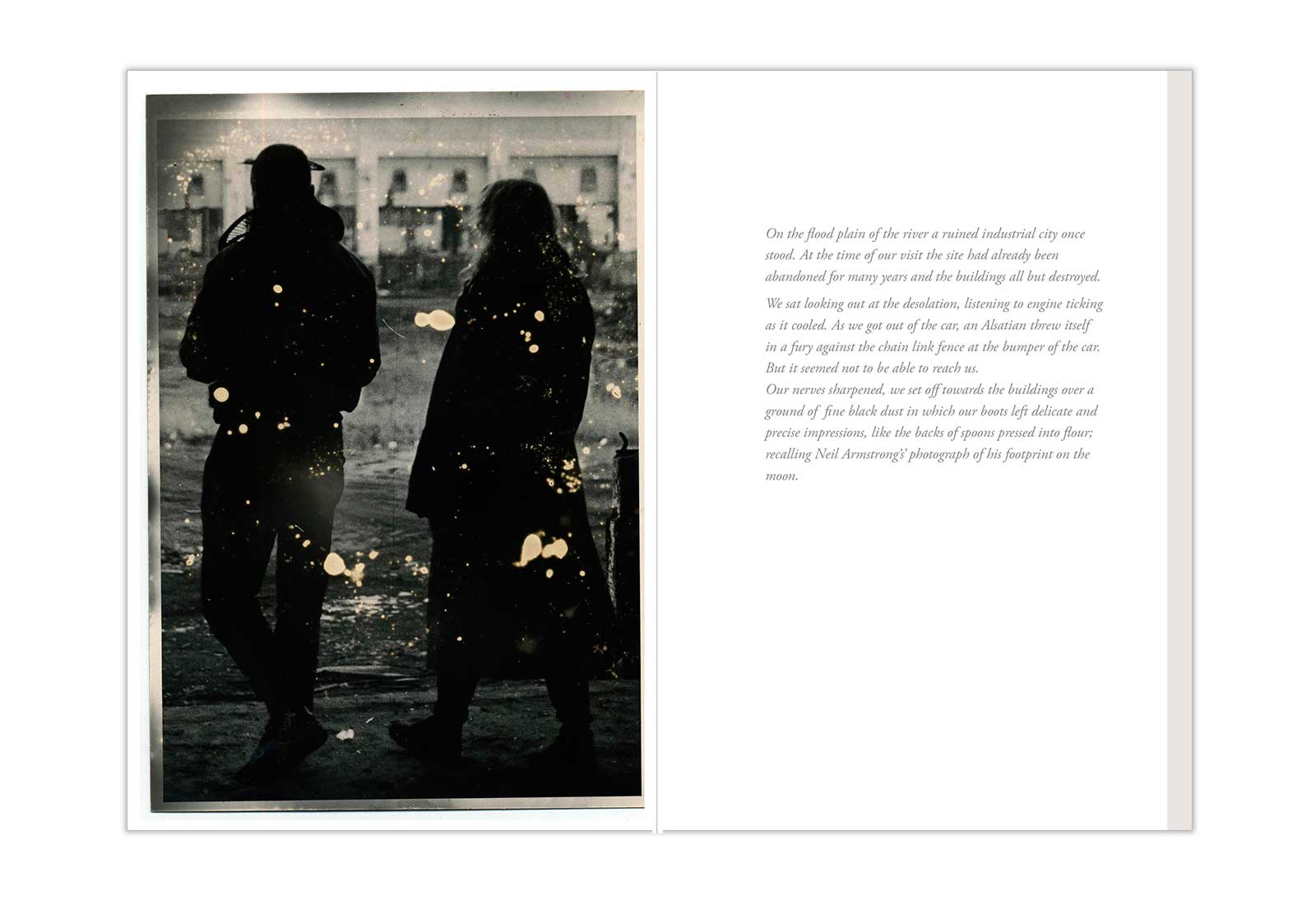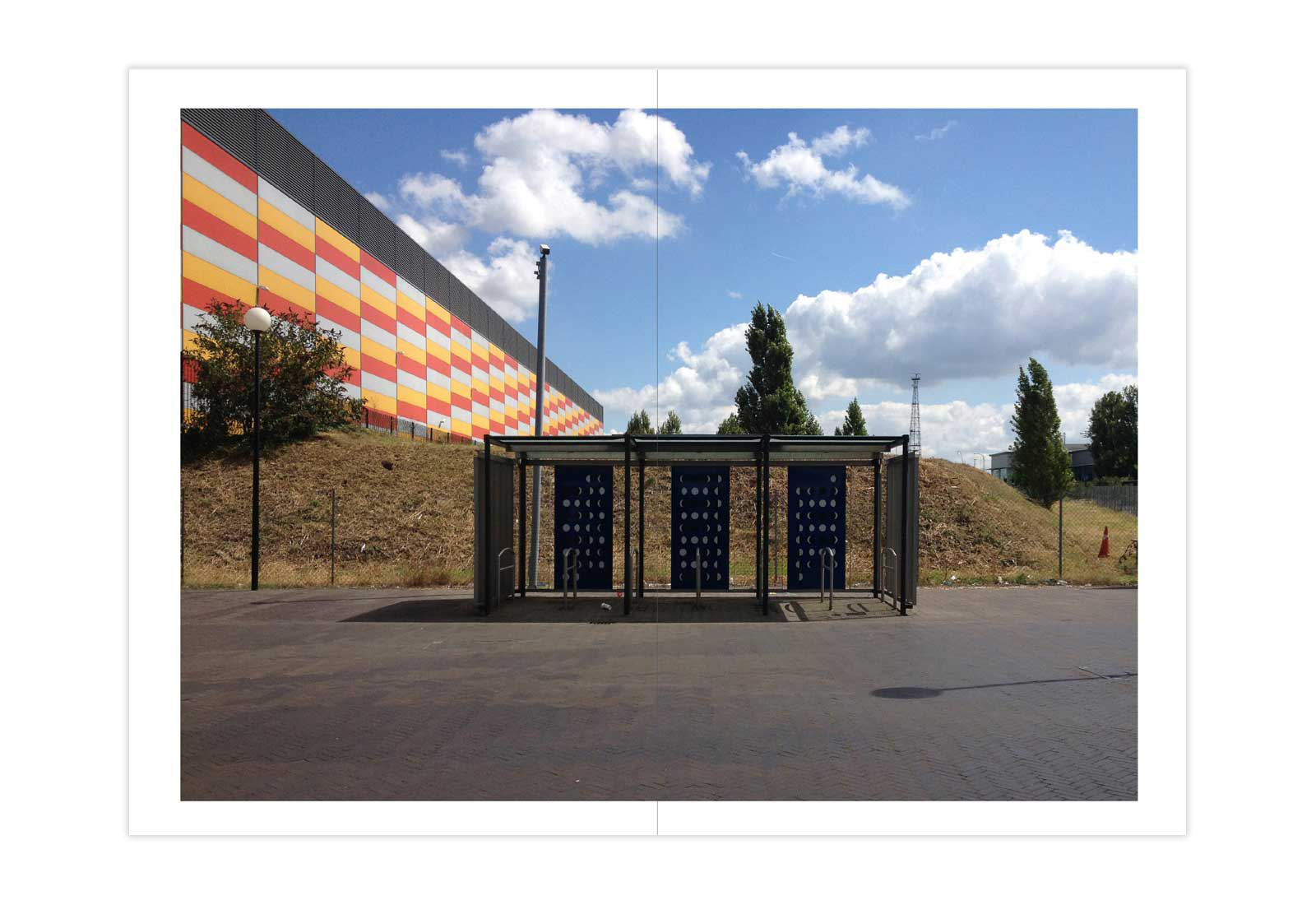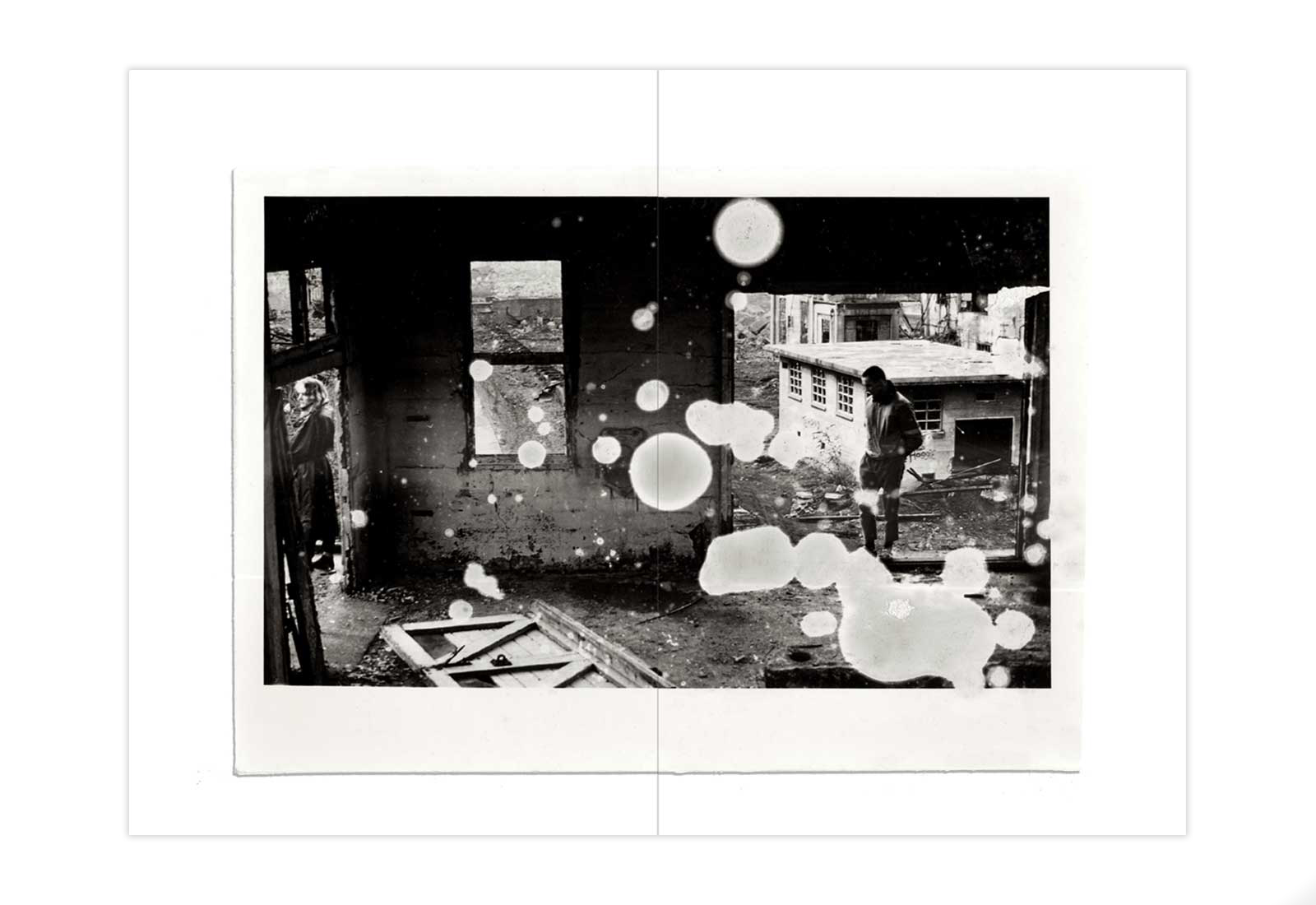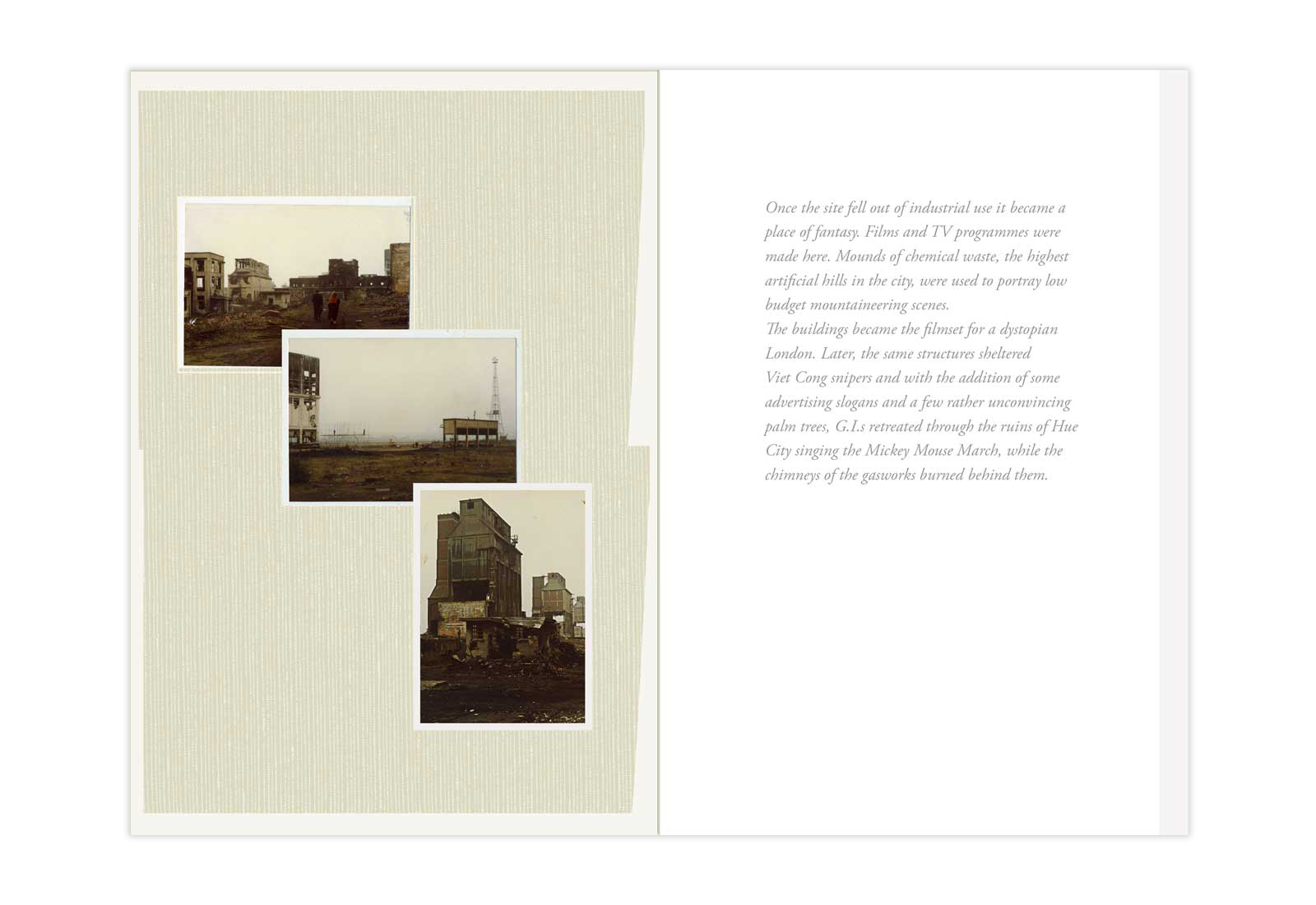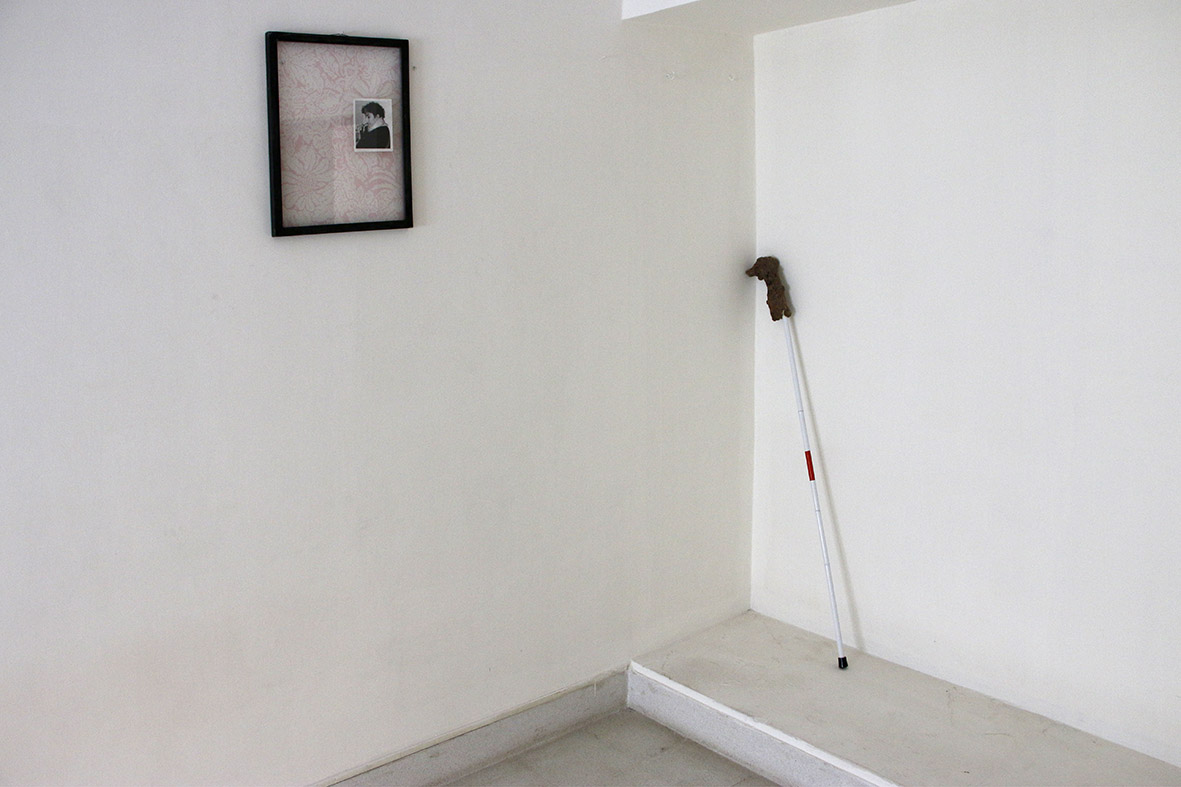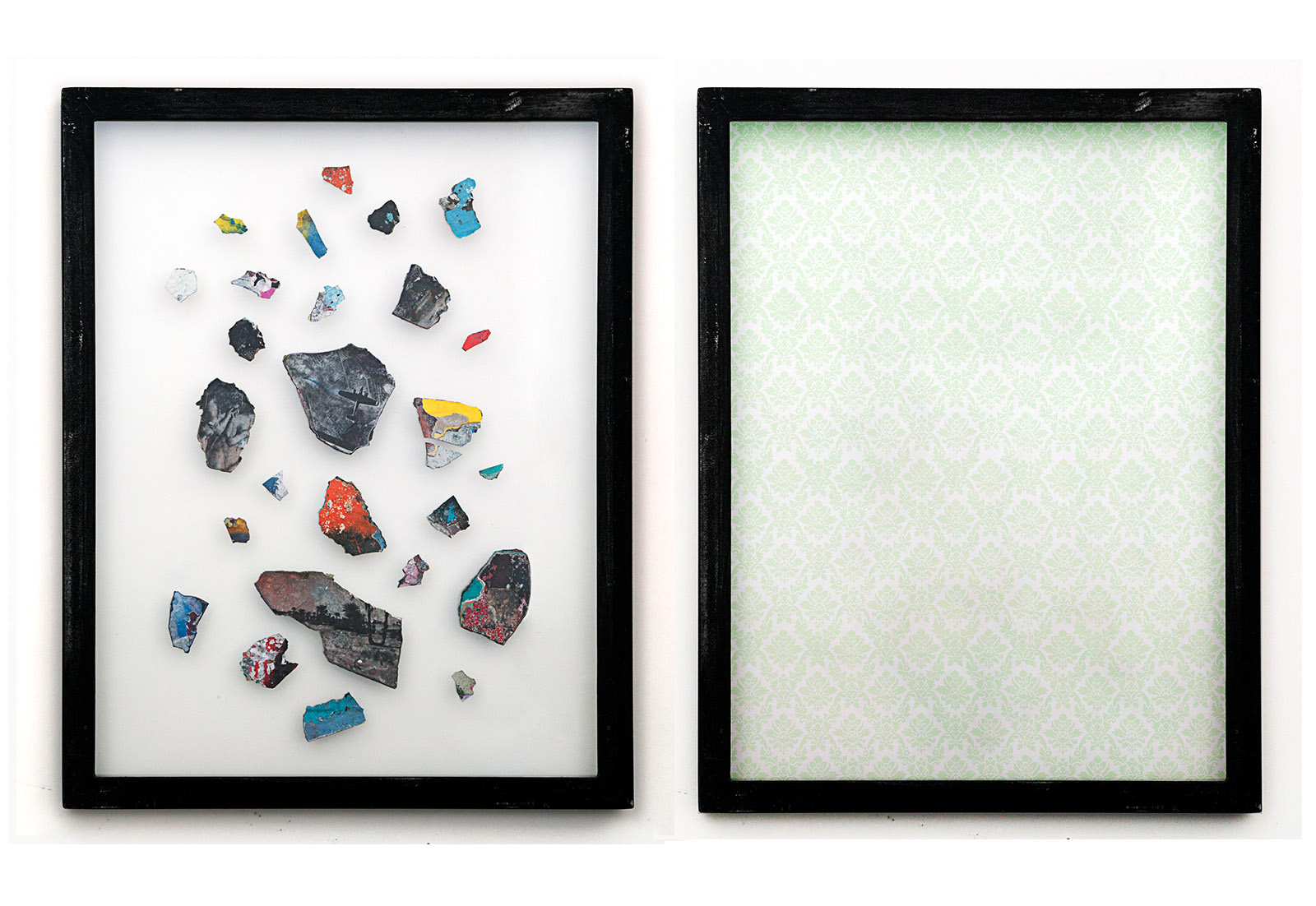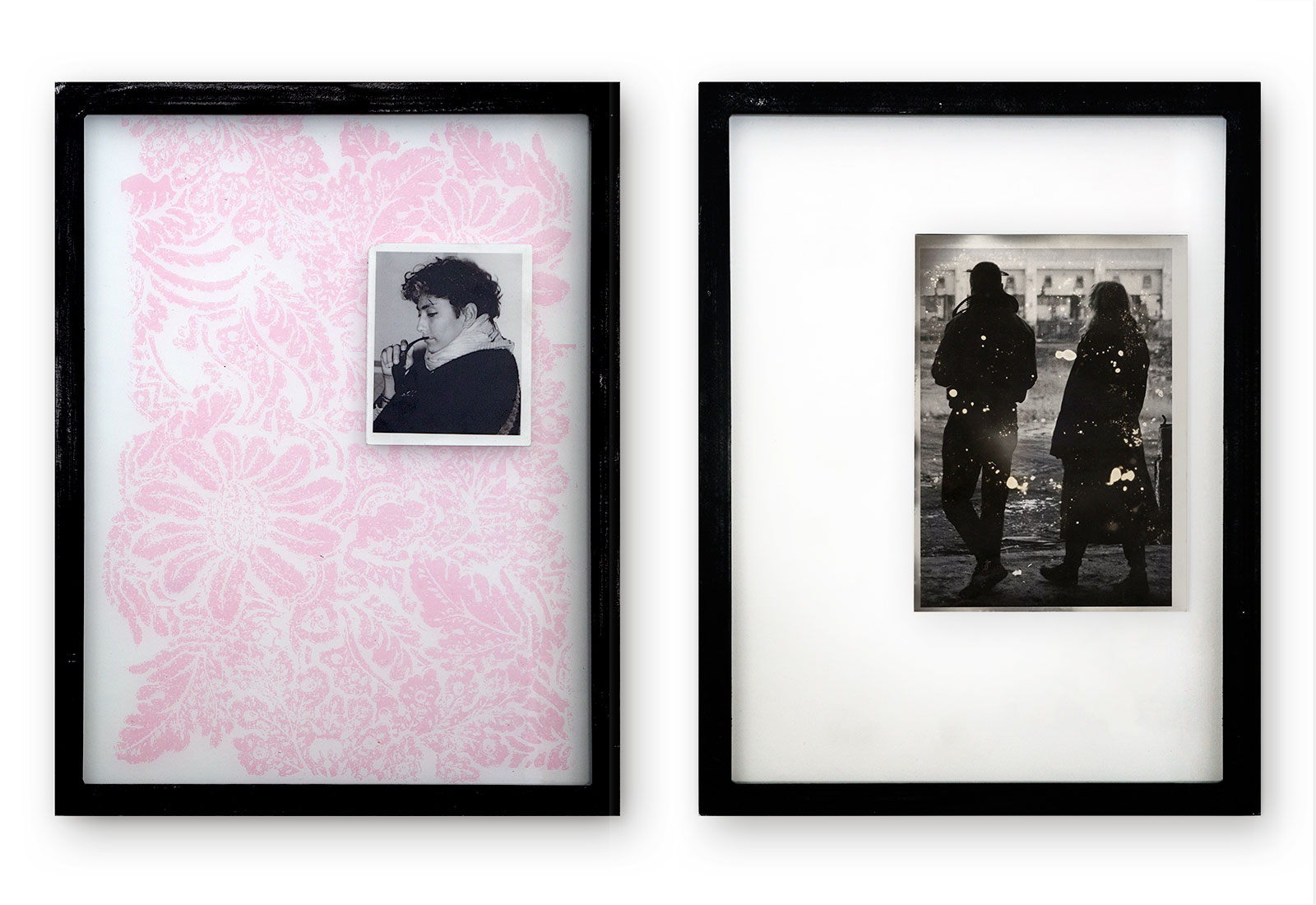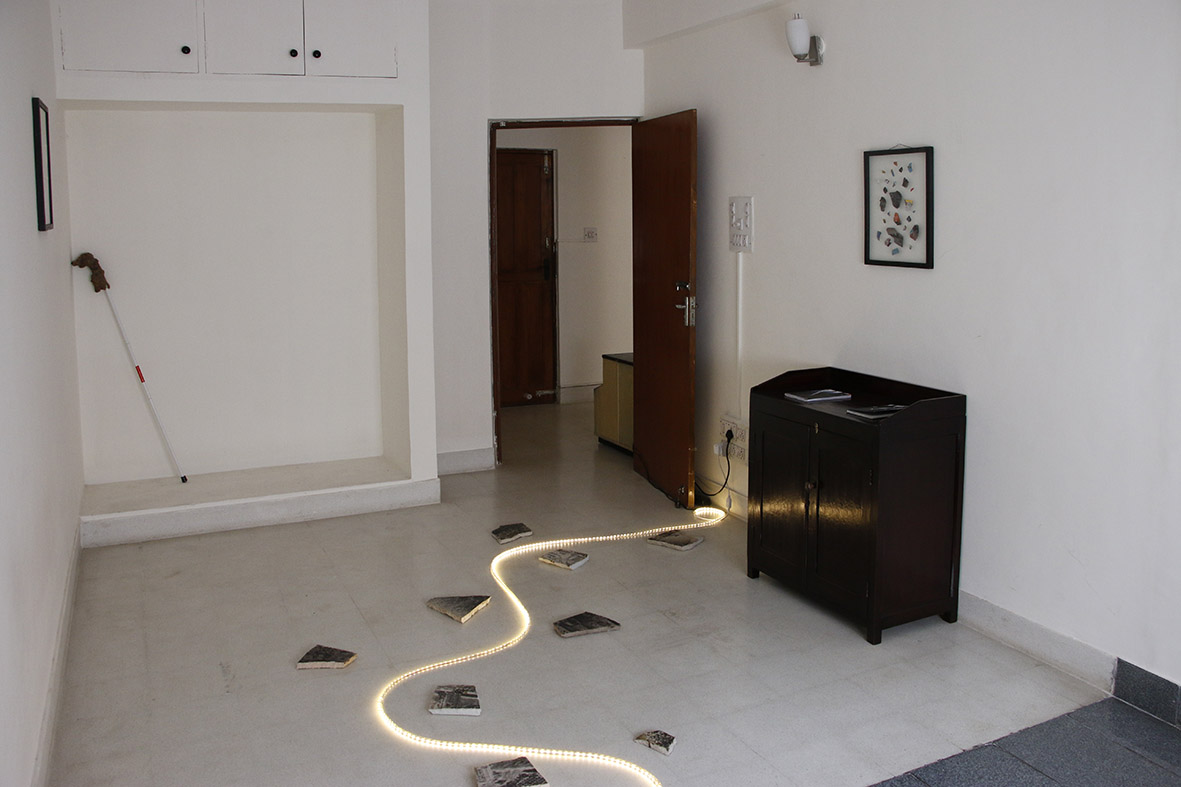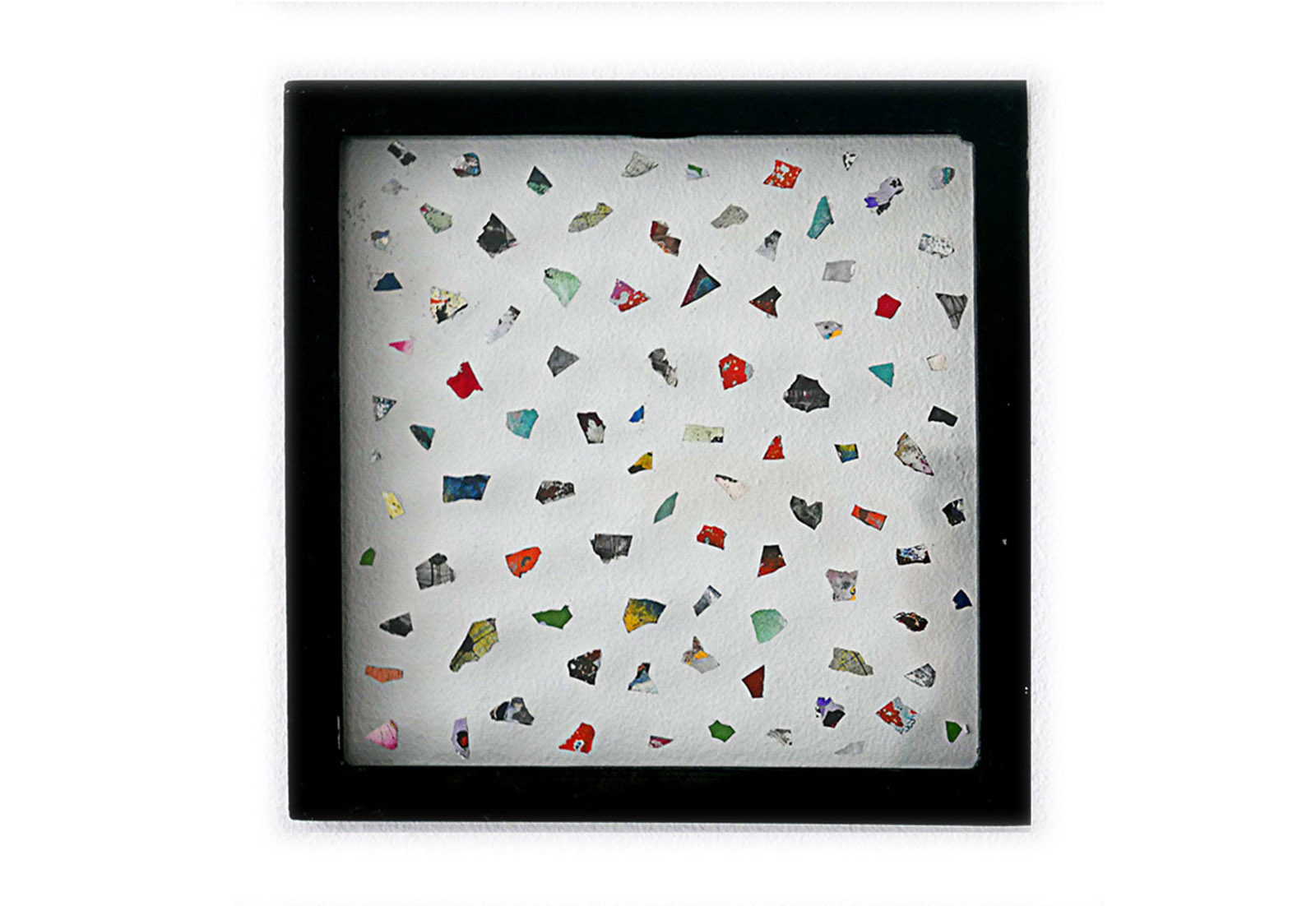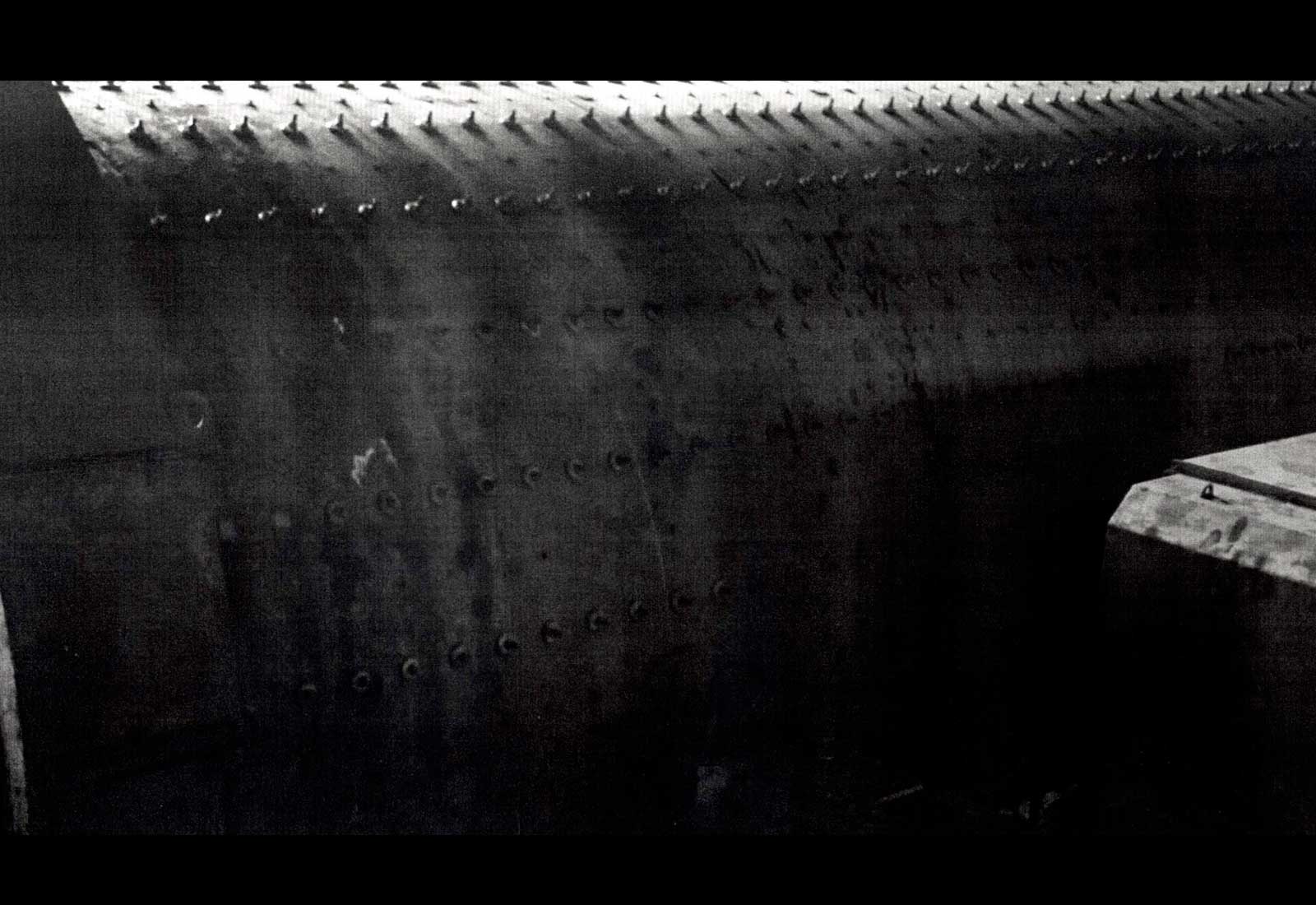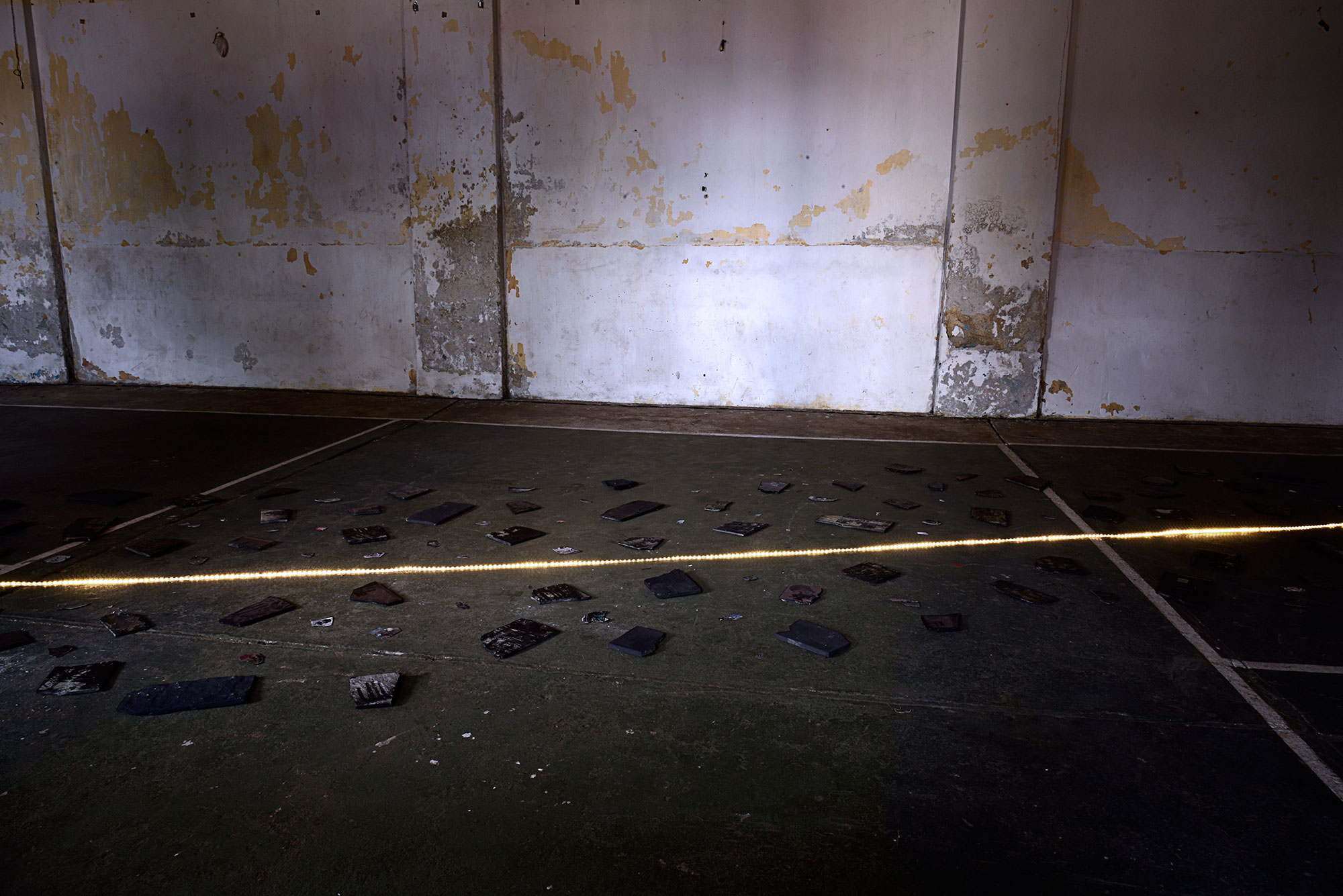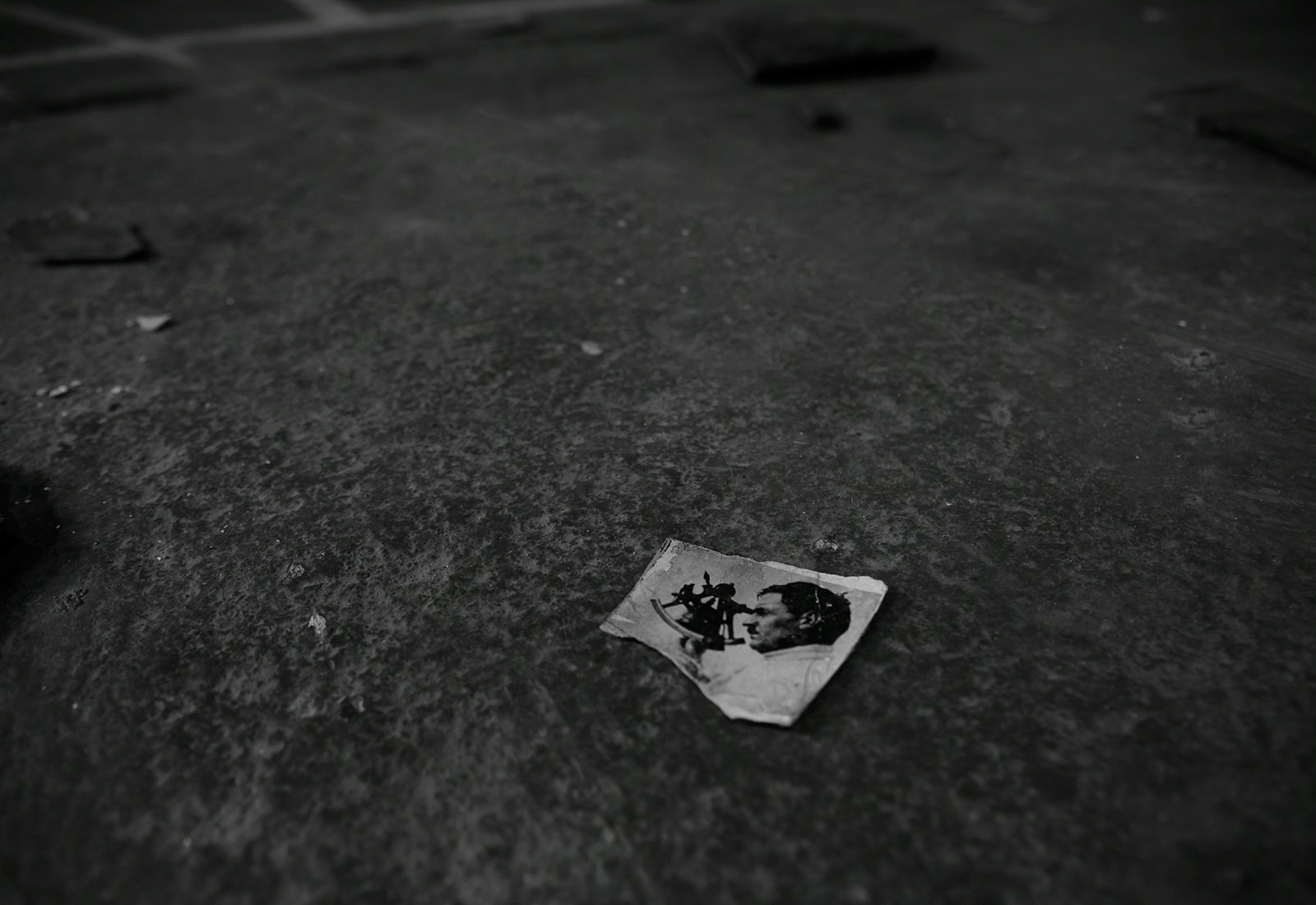SILVERTOWN (spreads from book)
Published by Pure Land Press – Available from www.purelandpress.net
Installation with materials associated with the Silvertown and crashedmydrone#1 such as framed works, prints and sculptures etc These stills are from the launch of Silvertown in Bangalore in January 2019
SILVERTOWN (drafts & research notes)
When Becton gas works was built in the 1870s celuloid photographic film was already in the process of development. The final destruction of the site in the 1990’s coincided approximately with the rise of digital technologies. The images created at the site (the negatives are lost) were imperfectly fixed, and have been subject to a process of chemical decay. Other images created around the same time have migrated onto the computer which has become the site of their transformation into a kind of atlas – a constellation of images existing both as a historical memory and as an allegorical one.
The Silvertown site was heavily bombed by the luftwaffe during the war but was rebuilt. During the 1970’s and 80’s its final demolition began as part of a re-development plan which was not completed at the time, probably as the site was considered too toxic. For this reason it was allowed to remain largely undisturbed for many years, during which time it was made use of by filmmakers and artists. The vastness and sublimity of the site could scarcely fail to provoke images of the rise and fall of civilisations—or supply a backdrop to more personal recollections of gain and loss.
The images, texts and ideas, together with the ways in which they have been preserved — or lost — are conflated in this book to present a flexible image of Silvertown as both a historical and a mythical location.
Peeling wallpaper in a deserted house tempts us to strip off further layers and see how things have changed through their accumulated history; each coloured and patterned surface a clue to a moment in time. These remnants display not only the tastes and preferences of the occupants of the time, but also the coordinates of their era. It seems an image analagous to the rings within trees or the core samples used by archaeologists and geologists. These accumulated paper layers which cover the walls of our dwellings and workplaces recall the book or the library, or perhaps the simplest kind of set for a play or film. Long forgotten characters move in front of these designs as part of a compressed history as they give shape to their world as they deliberate and deliver their lines.
On the retina screen no such layering exists – it prefers instead to refresh its images, as if immersing them in water like pebbles in the beach—rendering their colours more lustrous their textures seemingly more immediate despite their age – but there is no sense of time being accumulated – the layers and rings of steady growth through deposition belong to the analogue world, as do the mechanisms of decay—the visual signals of the passage of time. When information is lost in the digital world it is discharged like a flash of static – rather than buried in an incremental accretion of matter.
Framed works 374x475mm. Screen printed glass with facsimiles of original prints. The fragments of paint in the steel and glass frames were gathered from the foreshore of the Thames not far from from the original site. Some of these fragments are printed in a darkroom using liquid emulsion.
Original rough of book.
When Stanley Kubrick created the set for the Tet offensive in his film Full Metal Jacket at Becton he combined the ruins of Silvertown with a few palm trees and some Vietnamese advertisements painted onto the concrete walls of the fragmented buildings. In this, he demonstrated his brilliance at persuading us to suspend our disbelief and witness the event he was portraying. Without the cropping, the smoke and the focus on the actors it’s hard to believe from photographs that the set could ever convince as possible location for a war in South East Asia.
The images assembled by Warburg in this way function as discontinuous sequences that find expressive significance only when considered in an arrangement of complex interconnections.
The Mnemosyne panels function as screens on which the phenomena produced in succession by the cinema are reproduced simultaneously.
ABY WARBURG AND THE IMAGE IN MOTION Philippe-Alain Michaud (Zone Books-2004)
